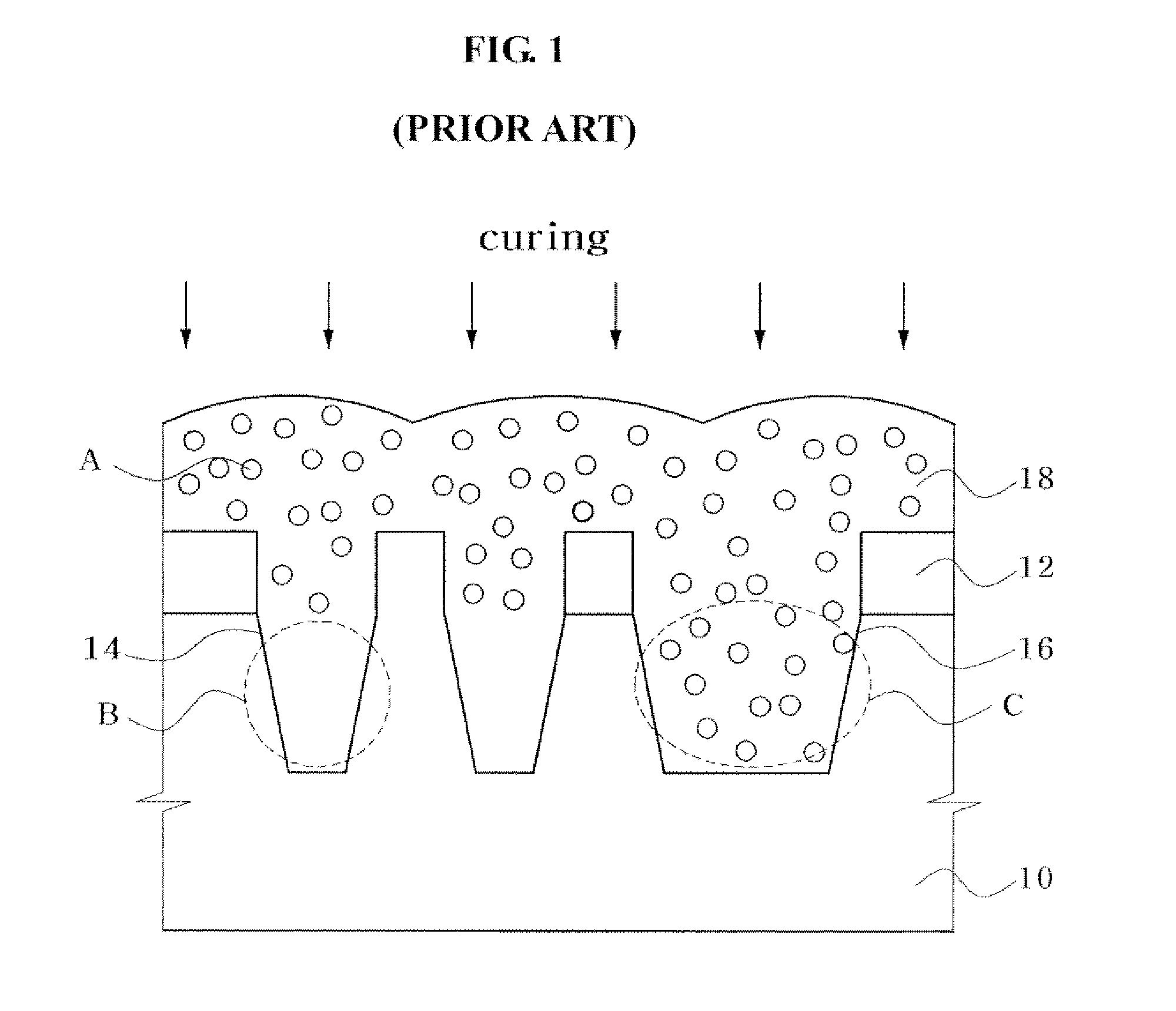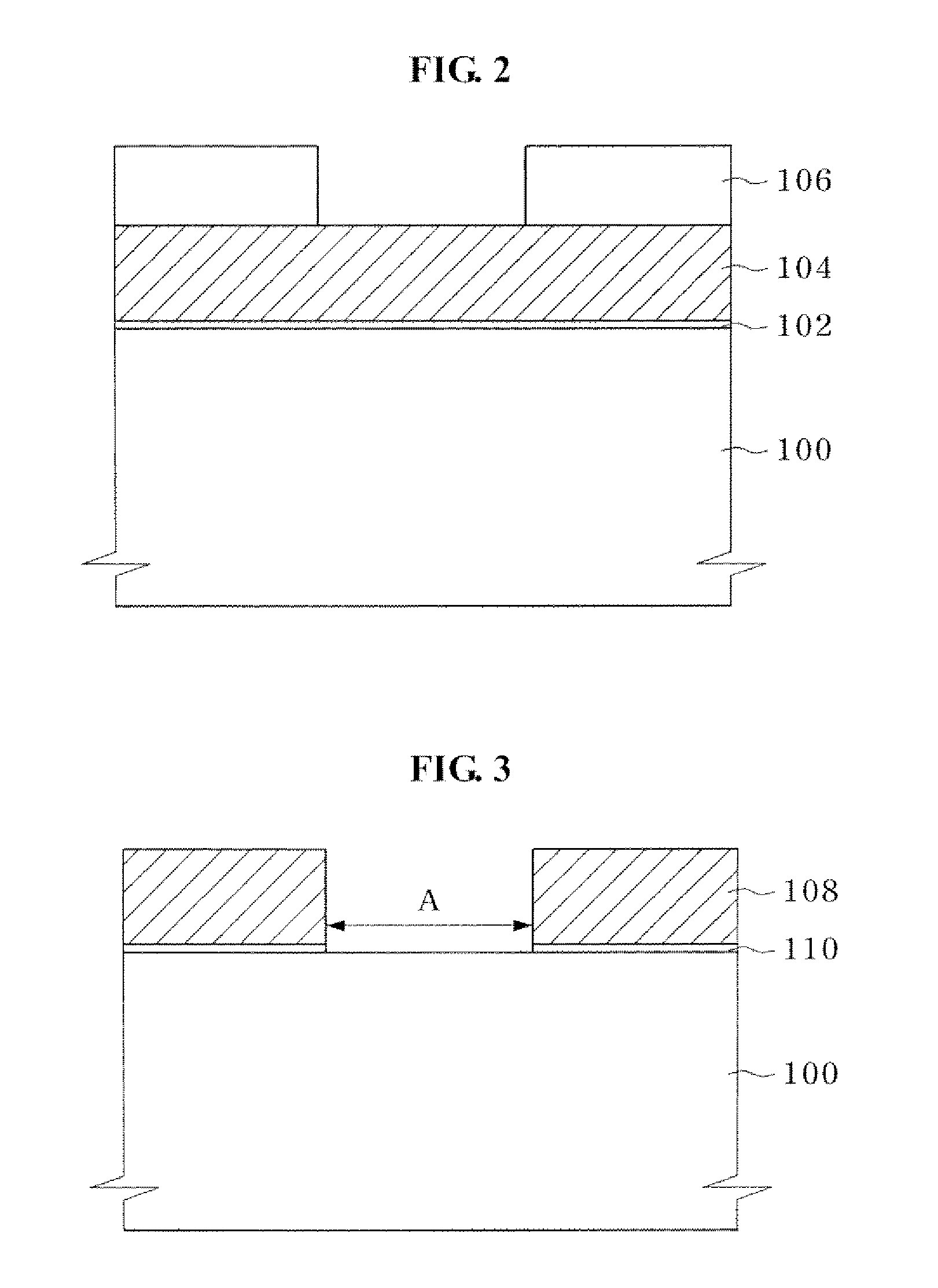Method for fabricating an isolation layer in a semiconductor device
- Summary
- Abstract
- Description
- Claims
- Application Information
AI Technical Summary
Benefits of technology
Problems solved by technology
Method used
Image
Examples
Embodiment Construction
[0021]Exemplary embodiments of the invention are described in detail with reference to the accompanying drawings. In the drawings, the thickness of each element of is enlarged for clarity. Throughout the disclosure, the same or similar elements are denoted by the same reference numerals.
[0022]FIGS. 2 to 7 are cross-sectional views illustrating a method for forming an isolation layer in a semiconductor device according to one embodiment of the invention. FIG. 8 is a graph illustrating the variation in the etching rate as a function of time delay.
[0023]Referring to FIG. 2, a pad oxide layer 102 and a pad nitride layer 104 are sequentially deposited on a semiconductor substrate 100. Although not shown, since the pad oxide layer 102 and the pad nitride layer 104 are formed in a furnace, they are formed on the back of a wafer. The pad oxide layer 102 lessens the stress on the semiconductor substrate 100 caused by the attraction of the pad nitride layer 104. Then, a photosensitive layer (...
PUM
 Login to View More
Login to View More Abstract
Description
Claims
Application Information
 Login to View More
Login to View More - R&D
- Intellectual Property
- Life Sciences
- Materials
- Tech Scout
- Unparalleled Data Quality
- Higher Quality Content
- 60% Fewer Hallucinations
Browse by: Latest US Patents, China's latest patents, Technical Efficacy Thesaurus, Application Domain, Technology Topic, Popular Technical Reports.
© 2025 PatSnap. All rights reserved.Legal|Privacy policy|Modern Slavery Act Transparency Statement|Sitemap|About US| Contact US: help@patsnap.com



